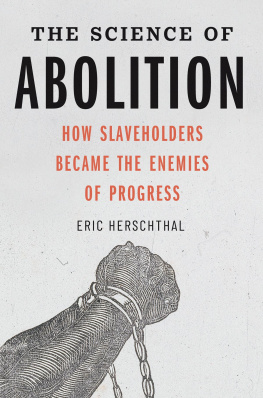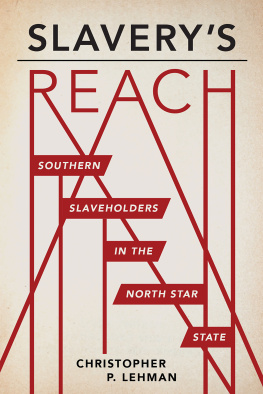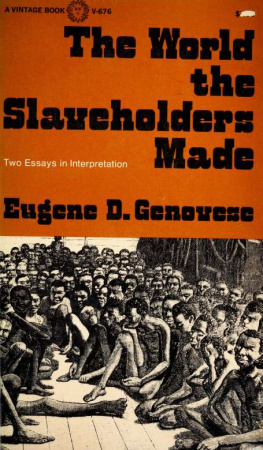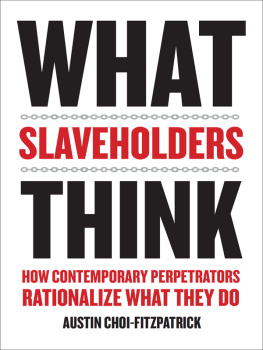ACKNOWLEDGMENTS
T his book would not have been possible without the support of remarkable teachers, and one in particular deserves special mention: Christopher L. Brown. He shepherded this project from its inception and has also been, since day one of graduate school, something more: a role model, intellectually and otherwise. So, first and last, thank you, Chris. A mighty thank-you to my dissertation committee as wellEric Foner, David Waldstreicher, James Delbourgo, and Matthew Joneswho, through their close readings of each chapter, shaped this book into what it is today. Each one of them, along with Chris, also provided me with essential support at critical moments in my nascent academic career, and without them Im not sure I would have made it through the long, tortuous slog of peer review, revising, and general job market misery. Technically, were colleagues now. But actually, theyre still my heroes.
Research grantsand the scholars, librarians, and staff who run themhave also made this book possible, and for them I am eternally grateful. A special thank-you to Daniel Richter for a priceless yearlong fellowship at the McNeil Center for Early American Studies at the University of Pennsylvania, where a fair amount of this book was written, and to my fellowship colleagues and the centers incomparable staff leaders, Amy L. Baxter-Bellamy and Barbara Natello, who make it all work. Another special thank-you to Brent Hayes Edwards and Sylviane Diouf for a truly magical year at the Schomburg Center for Research in Black CultureNew York Public Library, on a Lapidus Center for the Historical Analysis of Transatlantic Slavery Postdoctoral Fellowship. The collegial, rigorousand fun!culture Brent created in the Scholars Center; the wisdom of Sister Aisha al-Adawiya; the support of the librarians; the advice of my fiercely intelligent cohort, Yuko Miki, Brian Jones, Imani Owens, Ansley Erickson, Anthony Bayani Rodriguez, Ayesha Hardison, Tyesha Maddox, and Hisham Aidi; and the help of the centers assistants-celebrities Margaret Odette and Naomi Lorrainall shaped this book and my understanding of its place within African American scholarship. So again, thank you.
Revisions to this book were made possible by a two-year postdoctoral fellowship at the Ohio State University, and without the support of Simone Drake, chair of the African American and African Studies Department, this undertaking would have been difficult beyond words. Simone made sure my time was protected, treated me like a genuine colleague, and encouraged me to think like an interdisciplinary Black Studies scholar; this bookand the nextwill forever reflect that influence. Other OSU colleagues and mentors who deserve heartfelt thanks include Quinn Capers IV, for selecting me for the fellowship and for being such an inspiring leader in the world of academic medicine; John Brooke, for mentoring me despite my being, lets face it, a random postdoc from another department; Margaret Ellen Newell and Joan Cashin, for similar reasons; and Valerie Lee and Kelly Jo Fulkerson-Dikuua for selecting me for the fellowship. In (or affiliated with) my own AAAS Department, a special thank-you for supporting me and this project: Lupenga Mphande, Judson Jeffries, Tiyi Morris, Ryan Skinner, Sarah Van Beurden, Linda Myers, Kwaki Korang, Franco Barchiesi, Molly Reinhoudt, Scopas Poggo, Kenneth Goings, Hasan Kwame Jeffries, Stephanie Shaw, Leta Hendricks, Ioanna Kipourou, Jerrell Beckham, and Candace Gaiters. The final touches on this book were completed at my new academic homethe University of Utahso a very hearty thank-you to all my new colleagues in the History Department, for believing in this project, and for welcoming me to the U.
Other institutions were vital to the research and writing of this book. For research grants, thank you to the American Philosophical Society, the Huntington Library, the Omohundro Institute of Early American History and Culture, the University of Miami (Florida) Library, Columbia Universitys








